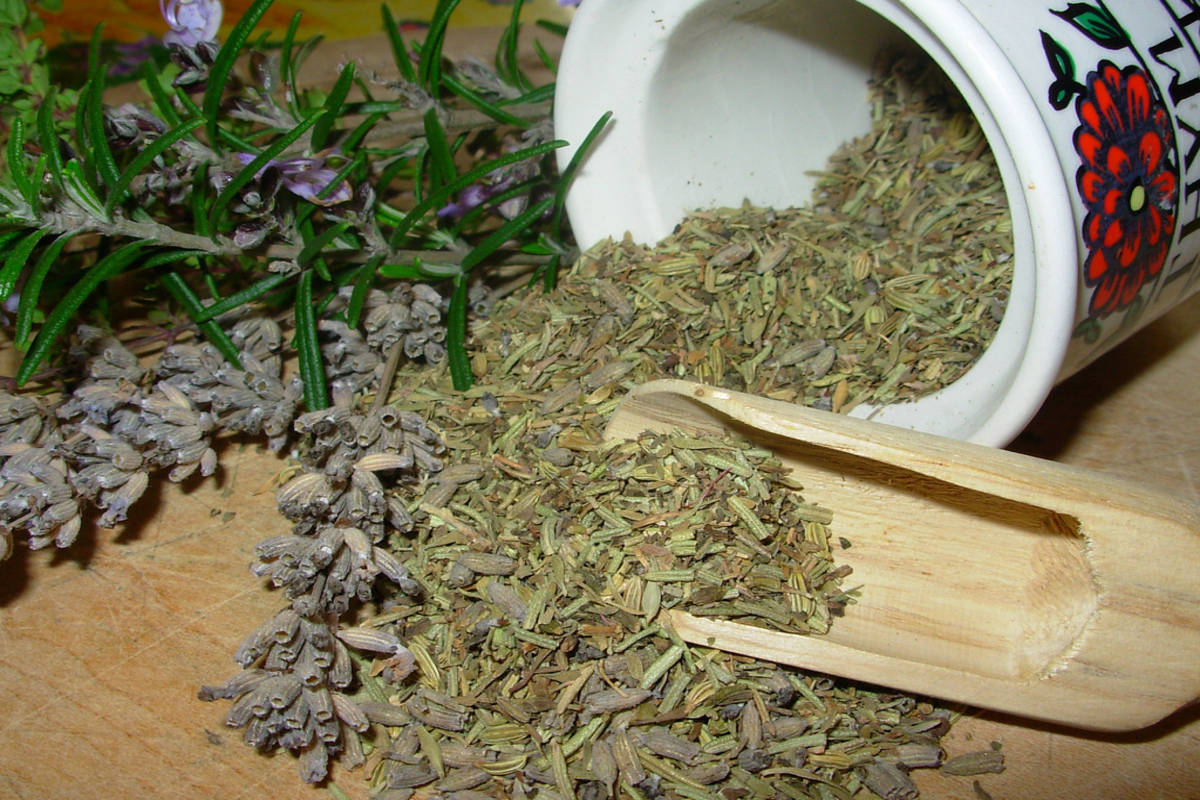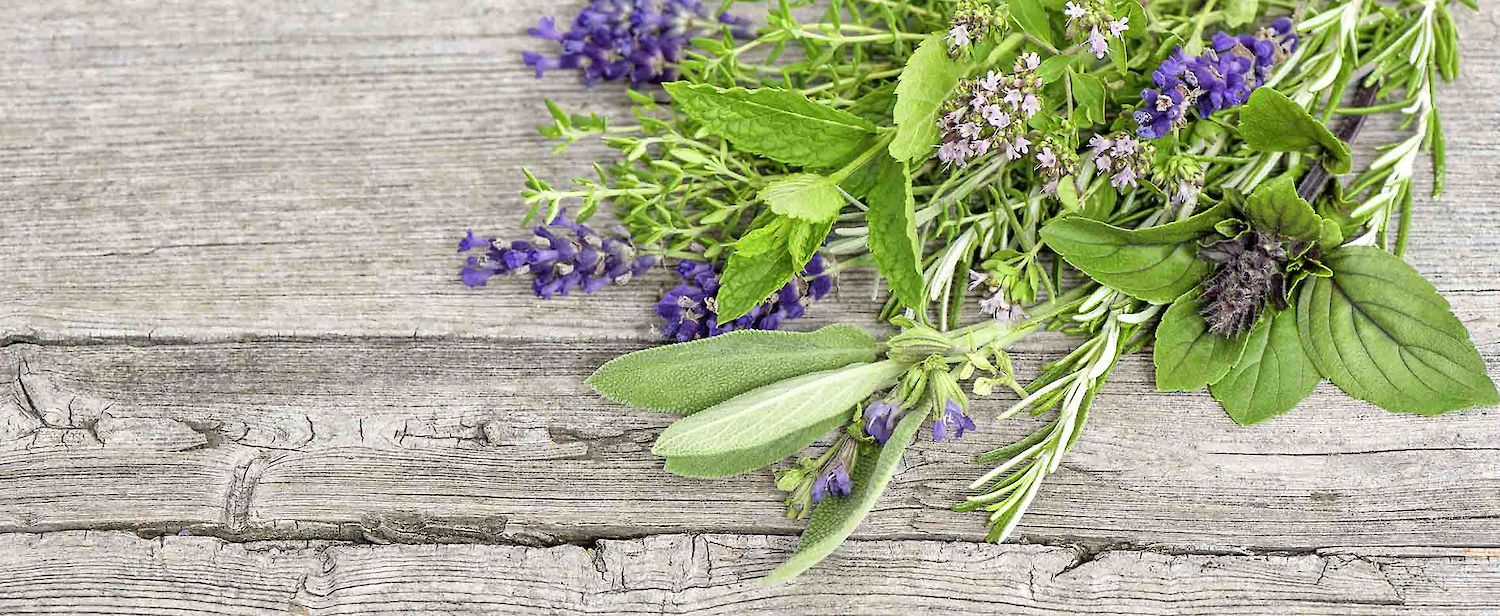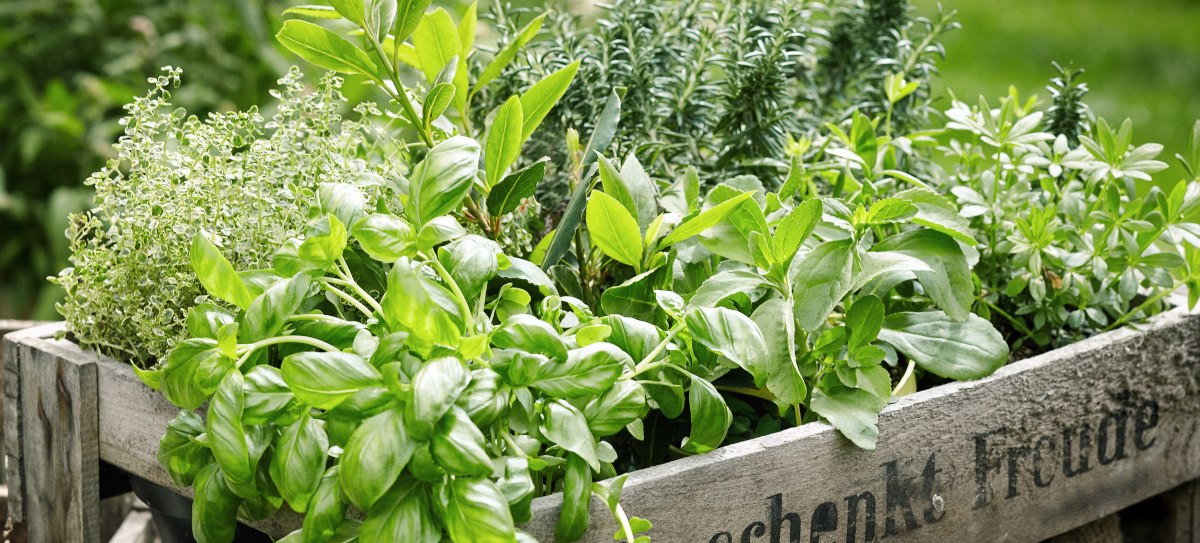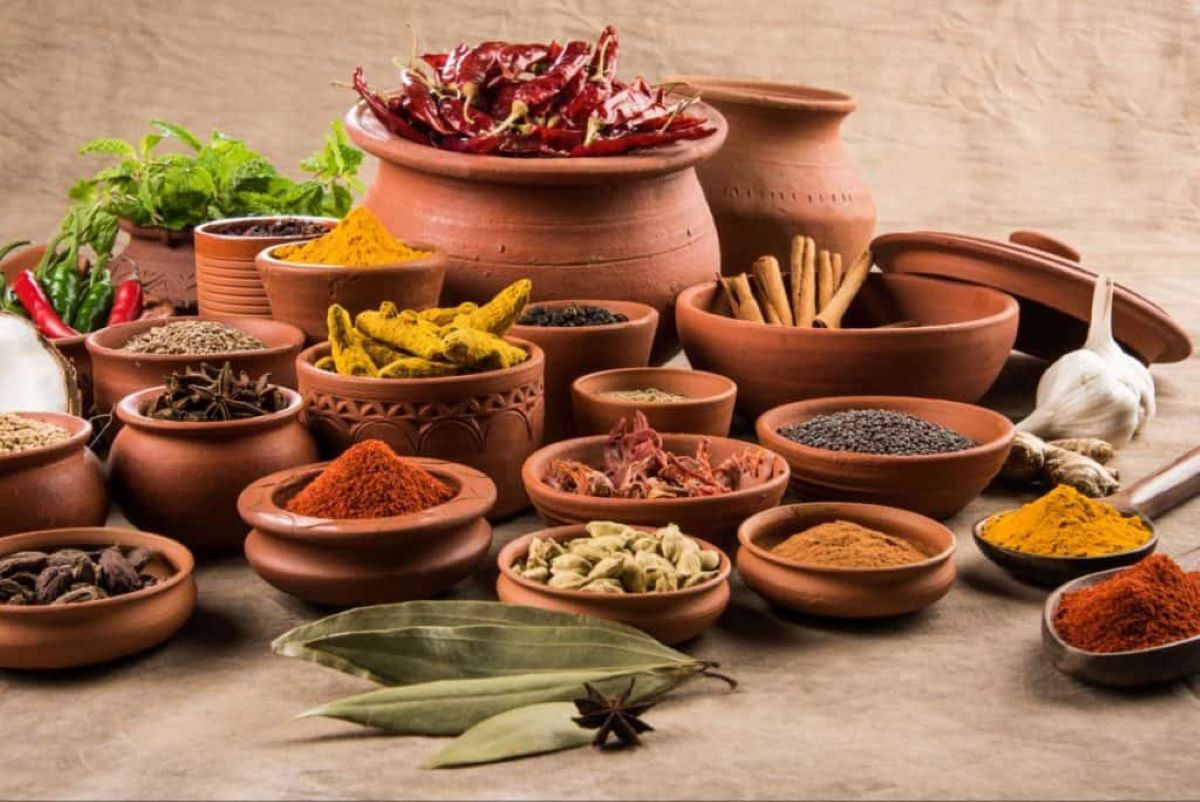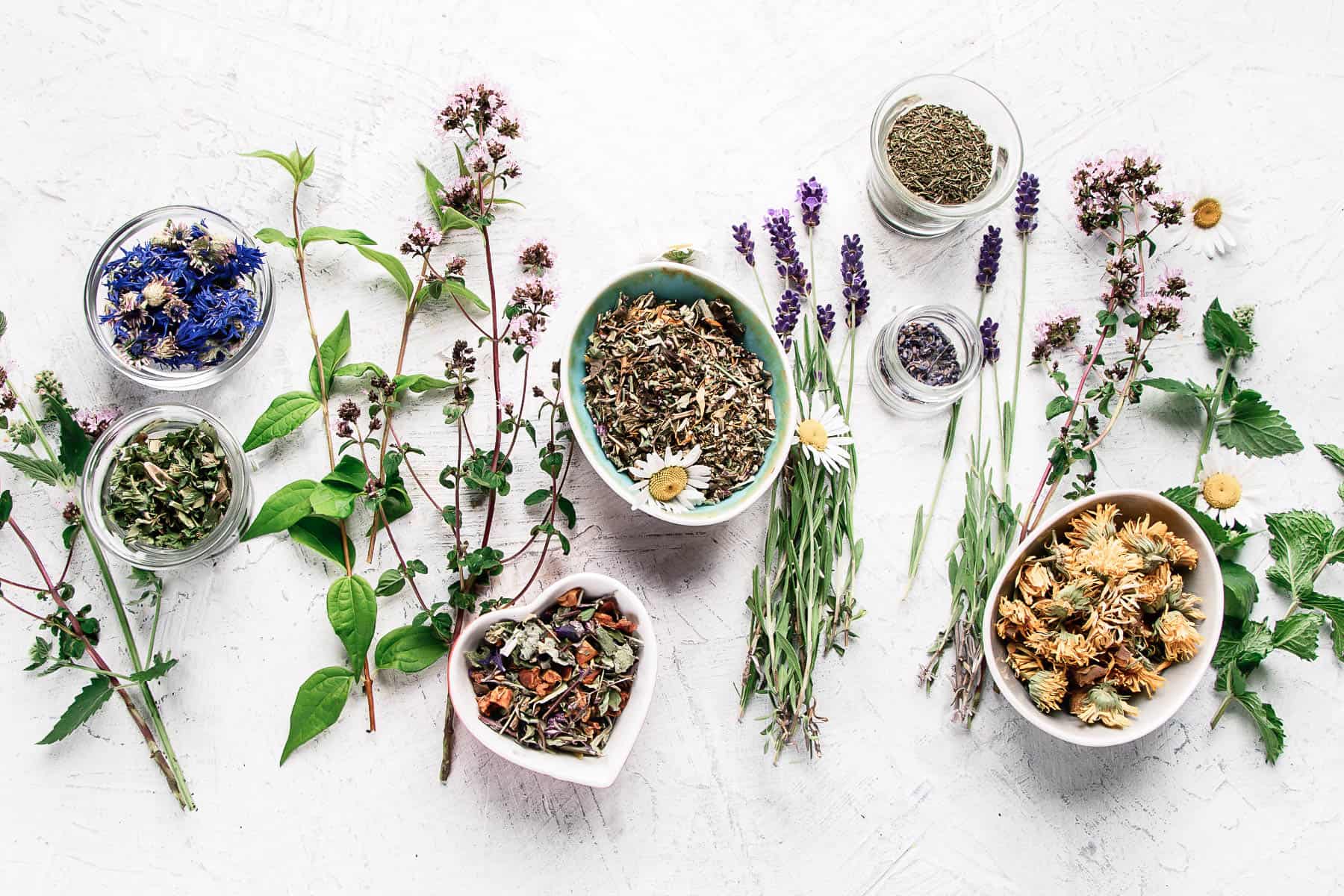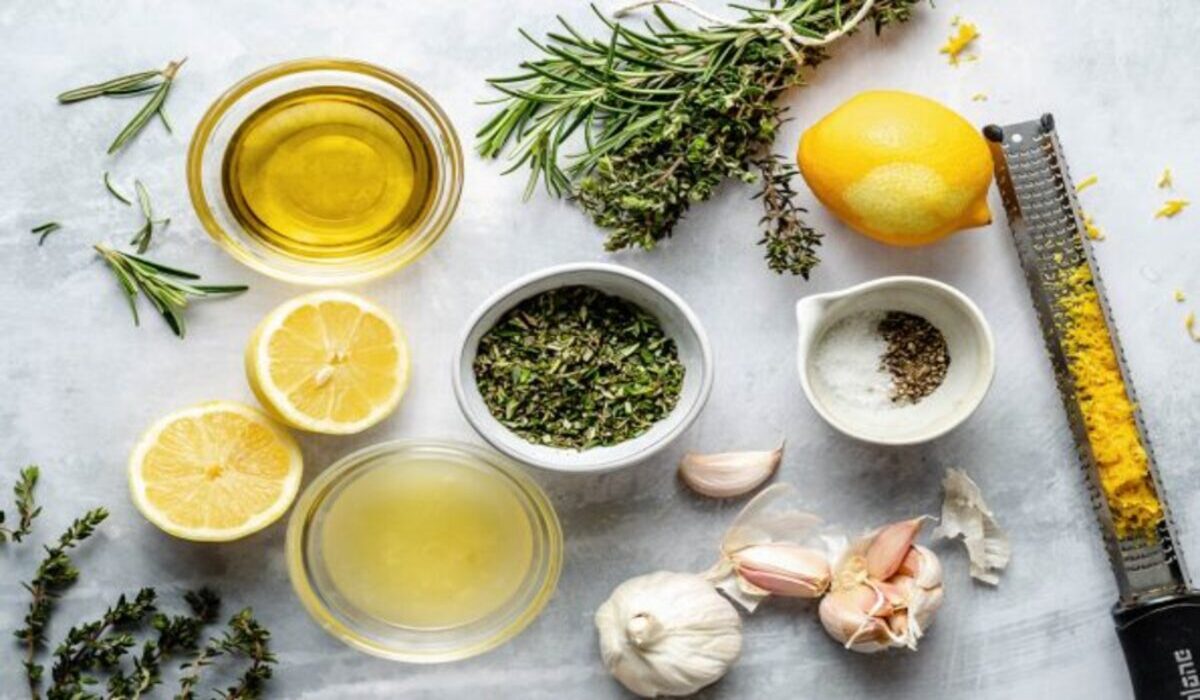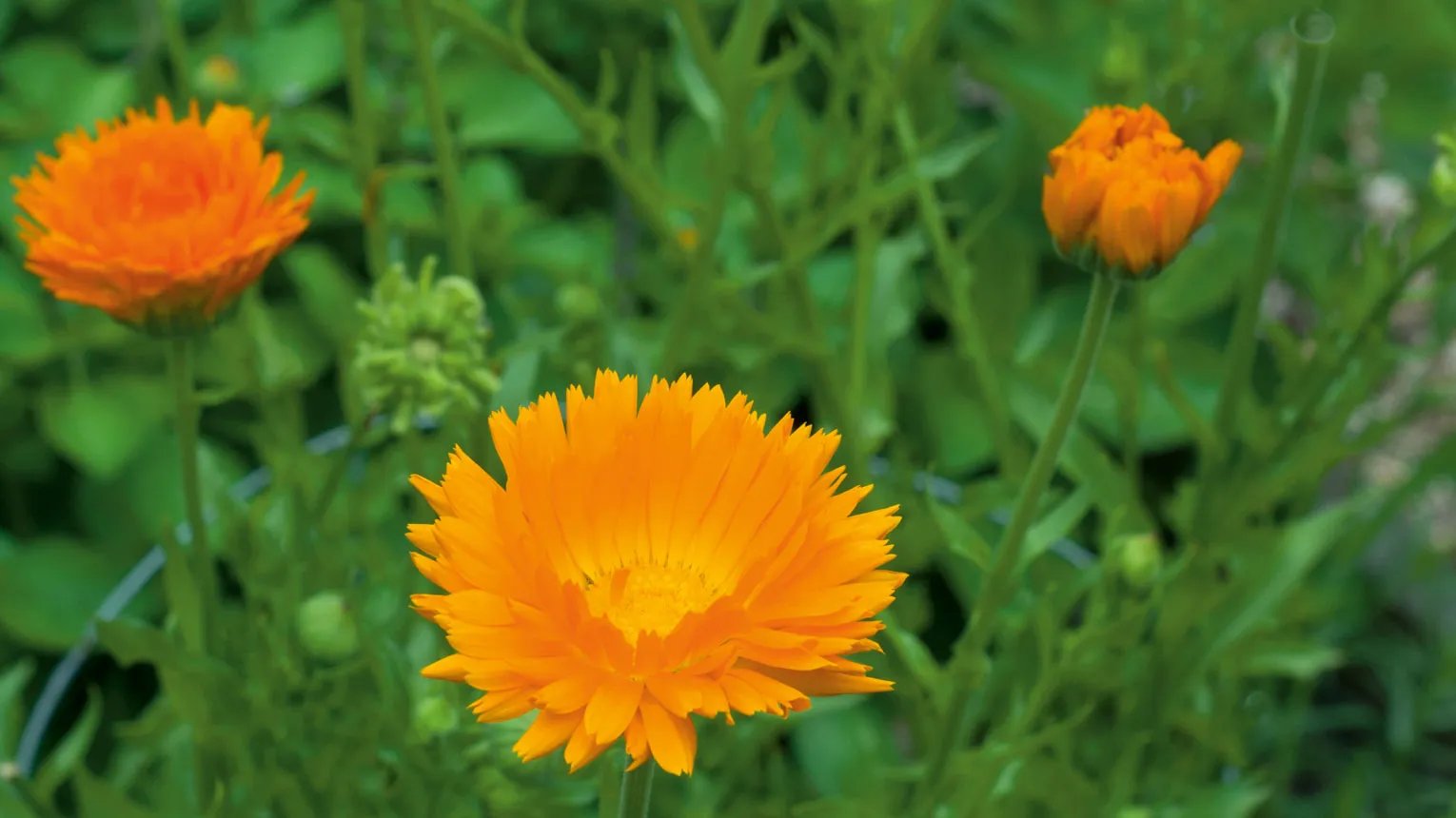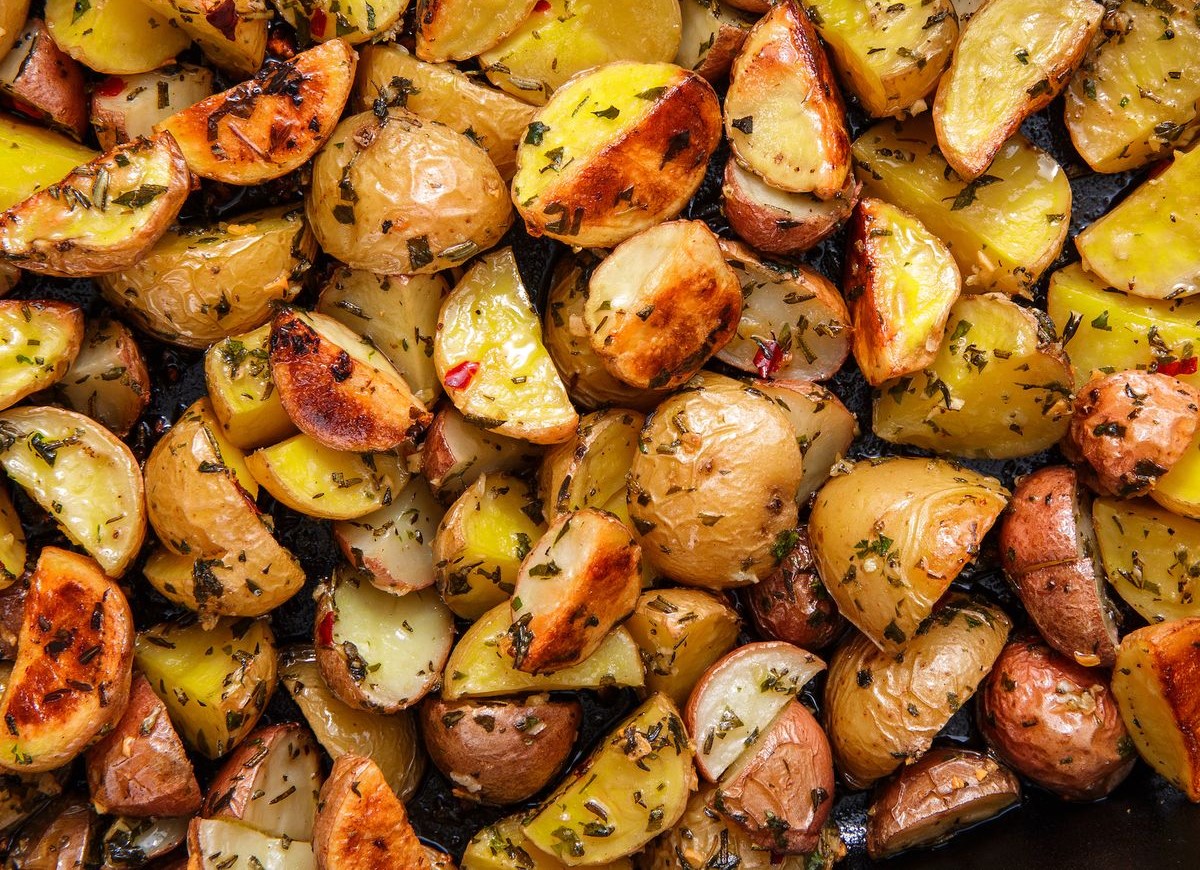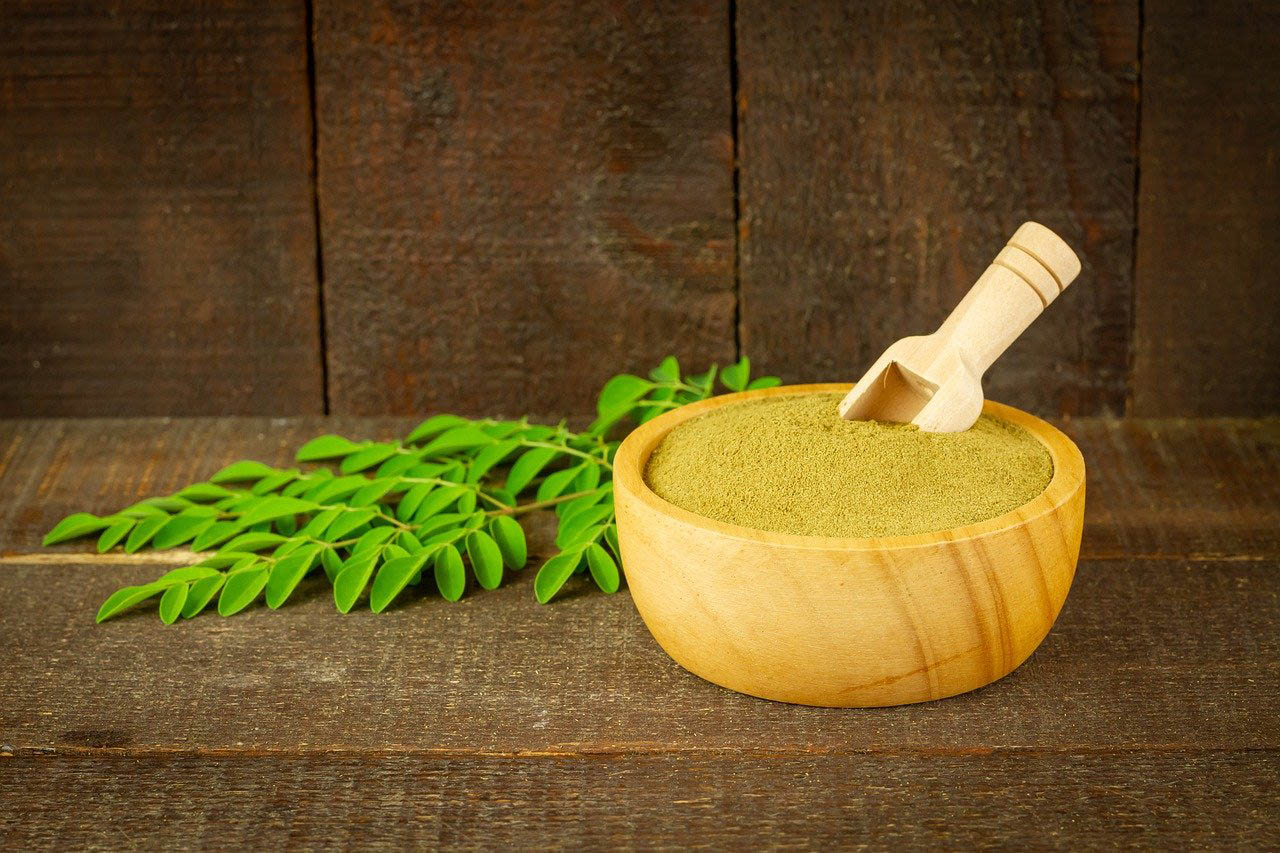Home>Gardening Basics>Getting Started>What Is Fine Herbs


Getting Started
What Is Fine Herbs
Modified: January 22, 2024
Discover the essentials of getting started with fine herbs. Learn about different types, growing tips, and how to use them in your cooking.
(Many of the links in this article redirect to a specific reviewed product. Your purchase of these products through affiliate links helps to generate commission for Chicagolandgardening.com, at no extra cost. Learn more)
Table of Contents
Introduction
Welcome to the world of fine herbs! If you are a food enthusiast or a passionate home cook, you may have come across the term “fine herbs” in various recipes or culinary discussions. But what exactly are fine herbs, and why are they so highly regarded in the culinary world?
Fine herbs refer to a specific combination of delicate and aromatic herbs that are widely used in French cuisine. These herbs are known for their subtle flavors and fragrances, which can elevate the taste and aroma of a dish to a whole new level.
When it comes to cooking with herbs, the possibilities are endless. From adding a touch of freshness to soups and sauces to enhancing the flavors of meats and vegetables, fine herbs can transform a simple dish into a culinary masterpiece.
In this article, we will delve into the world of fine herbs, exploring their definition, culinary uses, common varieties, tips on growing and caring for them, as well as some popular recipes that showcase their versatility. So, if you are curious about fine herbs and want to take your cooking skills to the next level, let’s dive in!
Definition of Fine Herbs
Before we explore the culinary applications of fine herbs, let’s first understand what exactly qualifies as a “fine herb.” The term “fine herbs” primarily refers to a specific combination of delicate and aromatic herbs, traditionally used in French cuisine to add a burst of fresh flavors to dishes.
The classic combination of fine herbs typically includes:
- Parsley: Known for its vibrant green color and clean, fresh flavor, parsley is a staple in many culinary traditions. It adds a mild, slightly peppery taste to dishes and is often used as a garnish.
- Chives: Chives are slender, grass-like herbs with a subtle onion flavor. They are commonly used to enhance the taste of salads, soups, and creamy sauces.
- Tarragon: Tarragon is a herb with long, slender leaves and a distinct anise-like flavor. Its delicate taste adds a touch of sweetness and depth to dishes, particularly in French cuisine.
- Chervil: Chervil is a delicate herb with lacy leaves and a subtle taste that combines hints of parsley and anise. It is often described as a cross between parsley and tarragon and is commonly used in French cooking.
What makes these herbs “fine” is their delicate nature and the way they complement each other’s flavors. They are typically added to dishes towards the end of the cooking process or used as a garnish to preserve their freshness and aroma.
While parsley, chives, tarragon, and chervil constitute the classic fine herb blend, other herbs like dill, basil, mint, and cilantro may also be included in certain regional variations and modern interpretations.
Now that we have defined what fine herbs are let’s move on to exploring the various ways in which they can be used in your culinary creations.
Culinary Uses of Fine Herbs
Fine herbs are an essential ingredient in French cuisine, known for their ability to enhance flavors and add a touch of elegance to dishes. Their delicate nature makes them ideal for dishes that require a subtle, aromatic touch. Here are some common culinary uses of fine herbs:
- Seasoning: Fine herbs are frequently used as a seasoning blend in various recipes. They can be added to soups, stews, sauces, and marinades to enhance the overall flavor profile of the dish.
- Garnish: One of the most popular uses of fine herbs is as a garnish. Sprinkling a pinch of chopped fine herbs on top of a dish not only adds a pop of color but also imparts a burst of freshness to the overall presentation.
- Egg dishes: Fine herbs pair exceptionally well with egg-based dishes such as omelets, quiches, and frittatas. They bring a light and aromatic touch to these dishes, elevating them to new heights.
- Sauces and dressings: Fine herbs are often used to add depth and complexity to sauces and dressings. Their subtle flavors can transform a simple sauce or vinaigrette into a culinary delight.
- Seafood: The delicate taste of fine herbs makes them an excellent pairing with seafood dishes. Whether sprinkled over grilled fish or incorporated into a delicate sauce, the herbs add a refreshing element that complements the seafood beautifully.
It’s worth noting that fine herbs are best used in dishes that require minimal cooking or when added towards the end of the cooking process. This ensures that their delicate flavors and aromas are preserved and not overpowered by prolonged heat.
Now that you have an understanding of the culinary uses of fine herbs, let’s explore some of the most common herbs that are typically included in this blend.
Most Common Fine Herbs Used in Cooking
When it comes to fine herbs, there are a few key herbs that are commonly used in cooking, particularly in French cuisine. These herbs are known for their delicate flavors and ability to enhance a wide range of dishes. Let’s take a closer look at the most common fine herbs used in cooking:
- Parsley: Parsley is a versatile herb that is widely appreciated for its vibrant green color and fresh taste. It can be used as a garnish, added to salads, sprinkled over soups, and incorporated into various savory dishes. Flat-leaf parsley, also known as Italian parsley, is preferred for its stronger flavor.
- Chives: Chives are slender, grass-like herbs that offer a mild onion-like flavor. They are often added as a finishing touch to dishes, providing both a subtle taste and visual appeal. Chives work well in salads, creamy sauces, scrambled eggs, and as a topping for baked potatoes.
- Tarragon: Tarragon is an herb with slender, glossy leaves and a distinct anise-like flavor. It is highly regarded in French cooking and can be used to elevate the taste of chicken, fish, eggs, and sauces such as bearnaise or hollandaise. French tarragon is the preferred variety due to its superior flavor.
- Chervil: Chervil is a delicate herb with feathery leaves and a subtle taste that combines hints of parsley and anise. Its mild flavor makes it an excellent addition to salads, soups, and delicate sauces. Chervil is commonly used in French cuisine and pairs well with seafood and poultry.
While these four herbs make up the classic fine herb blend, variations can be found in different regional cuisines and modern interpretations. Some variations may include additional herbs such as dill, basil, mint, or cilantro, depending on the desired flavor profile.
It’s important to note that when using fine herbs, it’s best to use them fresh, as this ensures the highest quality and most vibrant flavors. However, if fresh herbs are not available, you can opt for dried herbs, although they may have a more concentrated flavor.
Now that we are familiar with the common fine herbs used in cooking, let’s move on to understanding how to cultivate and care for these herbs to ensure a fresh and abundant supply.
How to Grow Fine Herbs
Growing your own fine herbs can be a rewarding experience. Not only do you have a fresh supply of flavorful herbs at your fingertips, but you also have the satisfaction of nurturing and harvesting your own ingredients. Here are some steps to help you grow fine herbs:
- Choose the right location: Fine herbs thrive in locations that receive at least 6 hours of sunlight a day. Find a spot in your garden or balcony that provides ample sunlight for your herbs to flourish.
- Prepare the soil: Fine herbs prefer well-draining soil that is rich in organic matter. Amend the soil with compost or organic fertilizer to ensure a healthy growing environment for your herbs.
- Select the herbs: Decide which fine herbs you want to grow based on your culinary preferences. Parsley, chives, tarragon, and chervil are the classic choices, but you may also consider adding other herbs like dill or basil.
- Sow the seeds or plant seedlings: You can either sow seeds directly into the soil or start with pre-grown seedlings for a head start. Follow the instructions on the seed packet or transplant the seedlings carefully into the soil.
- Water appropriately: Fine herbs need consistent moisture but should not be overwatered. Water the plants when the top inch of soil feels dry, ensuring the water reaches the plant’s roots. Avoid waterlogging the soil.
- Provide support: Some herbs, like parsley and tarragon, may benefit from support as they grow. Place stakes or small trellises near the plants to prevent them from drooping or falling over as they develop.
- Control pests: Keep an eye out for common herb pests such as aphids or snails. Use organic pest control methods or natural deterrents to protect your herbs from infestations.
Remember to regularly monitor your herbs, checking for signs of disease or nutrient deficiencies. Making sure they have adequate space to grow and periodically pruning them can promote healthy growth and prevent overcrowding.
Now that you know how to grow fine herbs, let’s explore how to care for them to ensure their longevity and continued success.
Caring for Fine Herbs
Caring for your fine herbs is essential to maintain their health and productivity. By providing adequate care, you can ensure a bountiful supply of fresh herbs for all your culinary endeavors. Here are some tips for caring for fine herbs:
- Watering: Fine herbs require regular watering to thrive. Water them when the top inch of soil feels dry, providing enough water to moisten the entire root system. Avoid overwatering, as it can lead to root rot or fungal diseases.
- Fertilizing: Feed your fine herbs with a balanced organic fertilizer once every four to six weeks during the growing season. This will provide the necessary nutrients for healthy growth and abundant flavor.
- Pruning: Regularly prune your fine herbs to prevent them from becoming leggy and to promote bushier growth. Pinch off the tips of the stems to encourage lateral branching and a fuller appearance.
- Protection from pests: Keep a watchful eye for common herb pests like aphids, snails, or mites. Remove any affected leaves or use organic pest control methods to prevent infestations from spreading.
- Companion planting: Consider companion planting to help deter pests and improve the overall health of your herbs. Planting marigolds, lavender, or basil nearby can repel pests and attract beneficial insects.
- Harvesting: Regularly harvest your fine herbs to encourage continuous growth. Harvest in the morning when the essential oils are the most concentrated. Use sharp scissors or garden shears to snip off the stems above a leaf node, allowing the plant to continue growing.
- Storage: If you have an abundance of harvested herbs, consider drying or freezing them to preserve their flavors. Hang small bunches upside down in a well-ventilated area or freeze chopped herbs in ice cube trays with a little water or olive oil.
By following these care tips, you can ensure that your fine herbs remain healthy, vibrant, and productive throughout the growing season.
Now that we have covered the steps to care for your fine herbs, let’s move on to the exciting part – harvesting and storing your freshly grown herbs.
Harvesting and Storing Fine Herbs
Harvesting your homegrown fine herbs at the right time is crucial for maximizing their flavors and aromas. By properly harvesting and storing your herbs, you can enjoy the freshness and culinary benefits of your harvest for an extended period. Here’s how to harvest and store fine herbs:
- Timing: Harvest your herbs when they are at their peak, usually in the morning when the essential oils are the most concentrated. Avoid harvesting during the hottest part of the day, as the herbs may wilt quickly.
- Method: Use sharp scissors or garden shears to cut off the stems just above a leaf node, ensuring you leave enough foliage for the plant to continue growing. Regular harvesting promotes bushier growth and a more abundant harvest.
- Leaf selection: Choose the healthiest and freshest leaves for harvesting. Avoid leaves that show signs of discoloration, damage, or disease.
- Immediate use: If you plan to use the herbs right away, give them a gentle rinse to remove any dirt or debris. Pat them dry with a clean kitchen towel and use them in your desired recipe.
- Drying: Drying is a common method of preserving herbs for long-term use. Bundle small bunches of herbs together with twine and hang them upside down in a cool, dry, well-ventilated area. Once completely dry, remove the leaves from the stems and store them in airtight containers away from direct sunlight.
- Freezing: Another option for preserving freshness is freezing the herbs. Chop the herbs finely and place them in ice cube trays with a little water or olive oil. Once frozen, transfer the herb cubes to a sealed freezer bag or container. This method allows you to easily grab individual portions of herbs as needed.
- Culinary preparations: Experiment with using fresh or dried herbs in your culinary creations. Fresh herbs are ideal for adding vibrant flavor to salads, sauces, or as a finishing touch. Dried herbs work well in recipes that require longer cooking times, such as stews, soups, or marinades.
Properly stored dried or frozen herbs can retain their quality for several months, allowing you to enjoy the taste of your homegrown fine herbs throughout the year.
Now that you know how to harvest and store your fine herbs, let’s explore some popular recipes that showcase the versatility of these aromatic ingredients.
Popular Recipes Using Fine Herbs
Fine herbs are a wonderful addition to a variety of culinary creations, enhancing the flavors and adding a fresh and aromatic touch. Here are a few popular recipes that showcase the versatility of these delicate herbs:
- Herb Roasted Chicken: Create a flavorful herb blend using chopped parsley, tarragon, and chives. Combine the herbs with olive oil, minced garlic, salt, and pepper. Rub this mixture over a whole chicken and roast it in the oven for a deliciously herby and succulent dish.
- Parsley and Chive Pesto: Blend fresh parsley, chives, garlic, lemon juice, pine nuts, Parmesan cheese, and olive oil together to create a vibrant and versatile pesto. Use it as a spread on sandwiches, a pasta sauce, or a topping for grilled vegetables.
- Tarragon Lemon Salmon: Sprinkle fresh tarragon leaves over salmon fillets, squeeze fresh lemon juice on top, and drizzle with olive oil. Grill or bake until the salmon is cooked through, resulting in tender and flavorful fish with a hint of citrus and anise-like notes.
- Chervil Potato Salad: Boil potatoes until tender, then let them cool. In a bowl, mix chopped chervil, diced red onion, Dijon mustard, mayonnaise, salt, and black pepper. Toss the dressing with the potatoes for a refreshing and herbaceous twist on a classic potato salad.
- Herb Butter: Mix softened butter with finely chopped fine herbs such as chives, parsley, and tarragon. Season with salt and pepper. Spread this flavorful herb butter on crusty bread or use it to finish off grilled steaks, roasted vegetables, or baked potatoes.
These recipes are just a starting point, and there are countless ways to incorporate fine herbs into your culinary creations. Don’t be afraid to experiment and let your creativity shine!
With these recipes, you can appreciate the versatility and fresh flavors that fine herbs bring to the table. Now that you have a better understanding of fine herbs, their uses, and how to grow and care for them, it’s time to explore the world of fine herb-infused delights in your own kitchen.
Conclusion
Congratulations! You’ve now dived into the enchanting world of fine herbs. We’ve explored the definition of fine herbs, their culinary uses, common varieties, and how to grow and care for them. By incorporating fine herbs into your cooking, you can elevate the flavors of your dishes and add a touch of freshness and sophistication.
Whether you’re making a vibrant herb roasted chicken, a zesty parsley and chive pesto, or a refreshing chervil potato salad, the delicate flavors of fine herbs will transform your culinary creations into culinary masterpieces.
Remember to choose the right location and soil for growing your herbs, water and fertilize them appropriately, and protect them from pests to ensure a thriving herb garden. When it’s time to harvest, do so at the peak of their freshness, and consider drying or freezing the excess to enjoy the flavors year-round.
Now armed with the knowledge of fine herbs and some delightful recipes, it’s time to unleash your creativity in the kitchen and explore the endless possibilities that fine herbs offer. Let your taste buds guide you as you experiment and add a touch of freshness to your favorite dishes.
So go ahead, embrace the world of fine herbs, and embark on a culinary journey filled with fragrant aromas, vibrant colors, and incredible flavors. Happy cooking!
